The Boston Celtics logo is one of the most recognizable symbols in the NBA. At its center is Lucky the Leprechaun, a character that represents the team’s Irish heritage, tradition, and winning mentality. But how did Lucky become the face of one of basketball’s most successful franchises? Let’s explore the origins, evolution, and significance of this iconic logo.
The Early Representation of Lucky (1950s)
Before the famous design by Zang Auerbach in 1968, the Boston Celtics had already used a version of Lucky the Leprechaun. The early logo, which appeared in the late 1950s and early 1960s, depicted a man leaping while smoking a pipe, holding a walking stick, and wearing a green vest adorned with clovers.
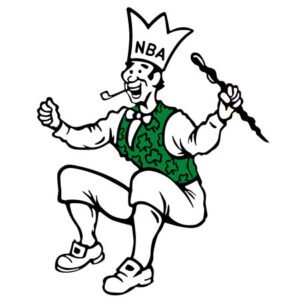
A white crown sat atop his head, with the NBA logo prominently displayed. This initial design was a precursor to the more iconic version that would come years later, maintaining the idea of an Irish-inspired mascot but in a different artistic style.
The Birth of Lucky the Leprechaun (1968)
Lucky’s story took a significant turn in 1968, when he was redesigned by Zang Auerbach, the brother of legendary Celtics coach and executive Red Auerbach. Zang, a talented cartoonist, brought a new life to the leprechaun character, solidifying its place in the team’s identity. This version of Lucky was dressed in a green vest, bow tie, and top hat, spinning a basketball on his finger while leaning on a cane, fully embodying the Celtic identity and giving the team a unique, instantly recognizable look.
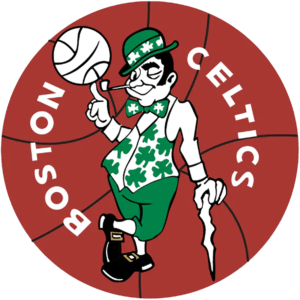
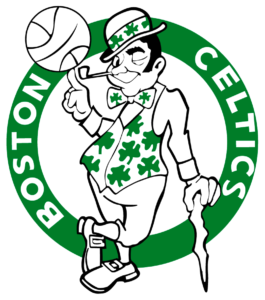
The Meaning Behind the Mascot
Leprechauns are mythical creatures in Irish folklore, known for their cleverness, mischief, and association with luck—qualities that align well with the Celtics’ on-court success. The term “luck of the Irish” was a fitting addition to a franchise that had already begun its dominance in the NBA, winning multiple championships in the late 1950s and 1960s.
The combination of the Celtics’ name and Lucky’s imagery made the team stand out in a league where many franchises relied on animal mascots or more generic designs. Instead, the Celtics embraced a cultural symbol that resonated with both their local fan base and the broader sports world.
Logo Evolution and Modernization
Although Lucky was introduced in 1968, the Celtics had previously used simpler logo designs featuring shamrocks and script-based branding. Once Lucky took center stage, he became the defining element of the team’s visual identity.
Over the years, the logo has undergone subtle refinements:
- The original version was detailed and colorful, featuring Lucky in a classic cartoon style.
- In 1996, the design was modernized with cleaner lines and a slightly sharper look while maintaining the core elements.
- Today, the logo remains largely unchanged, with Lucky still prominently displayed at center court in TD Garden and across official team merchandise.
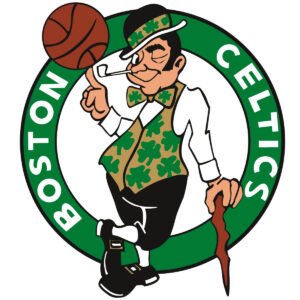
While the Celtics have occasionally used alternative logos, including a simpler shamrock design, the Lucky emblem remains the primary face of the franchise.
Beyond the Logo: Lucky as a Live Mascot
Lucky’s influence extends beyond the team’s branding. In the late 1990s, the Celtics introduced a real-life Lucky the Leprechaun as their on-court mascot. Unlike traditional mascots with oversized costumes, Lucky is portrayed by a stunt performer who executes high-flying dunks, acrobatics, and crowd interactions during games.
This unique approach keeps the Celtics’ mascot aligned with the team’s image—charismatic, skillful, and full of energy. Fans have embraced Lucky as a true part of the Celtics’ game-night experience, making him one of the NBA’s most dynamic mascots.
Lucky on T-Shirts and Celtics Merchandise
Over the years, Lucky the Leprechaun has also become a staple in the Celtics’ merchandise lineup. He frequently appears on T-shirts, caps, and jackets, making him one of the franchise’s best-selling symbols. Lucky’s popularity in official team products reflects his strong connection with the fan base, who see him as a symbol of pride and tradition.
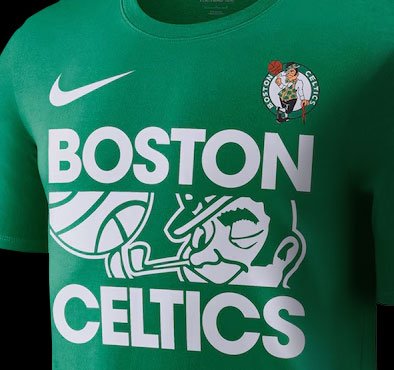
Celtics T-shirts often feature Lucky in various styles, from the classic design with his original pose to modernized versions for special collections. Limited-edition releases and collaborations with streetwear brands have elevated the leprechaun’s status in the world of sports fashion. His presence on apparel extends beyond Boston fans, attracting even casual NBA enthusiasts due to his striking visual appeal and cultural significance.
Why Lucky Stands the Test of Time
Many NBA teams have updated their branding, some even rebranding entirely. Yet, the Celtics have remained steadfast in their visual identity, proving that a great logo doesn’t need constant reinvention. Lucky the Leprechaun is more than just a mascot; he represents Boston’s culture, the team’s tradition, and the winning spirit of one of the most successful franchises in sports history.
In a league where branding plays a crucial role in fan engagement and merchandise sales, the Celtics’ continued success with Lucky proves that a well-crafted, meaningful logo can stand the test of time. As long as the Celtics continue their pursuit of championships, Lucky will remain at the heart of their identity, spinning the ball and smiling with confidence.
Lucky the Leprechaun is a Classic Example of Successful Sports Branding
For NBA fans and design enthusiasts alike, Lucky the Leprechaun is a masterclass in sports branding. By blending folklore, local culture, and basketball tradition, the Boston Celtics have created one of the most enduring and beloved logos in sports history. Whether you see him on a jersey, a cap, or at center court, Lucky is a timeless symbol of the Celtics’ legacy.
Related Articles
5 Best-Selling NBA Jerseys in 2024-25 ->
Boston Celtics Championship Shirts: The Style and Tradition of Green and White Merchandising ->
